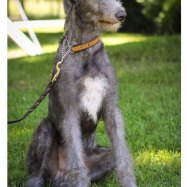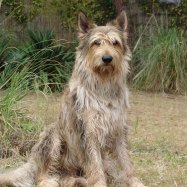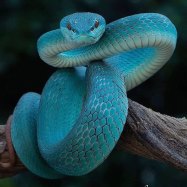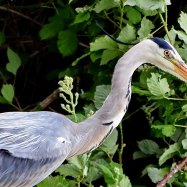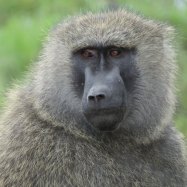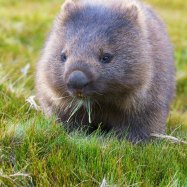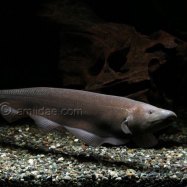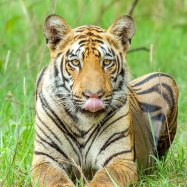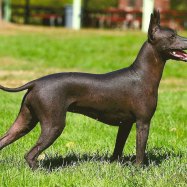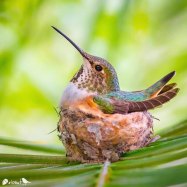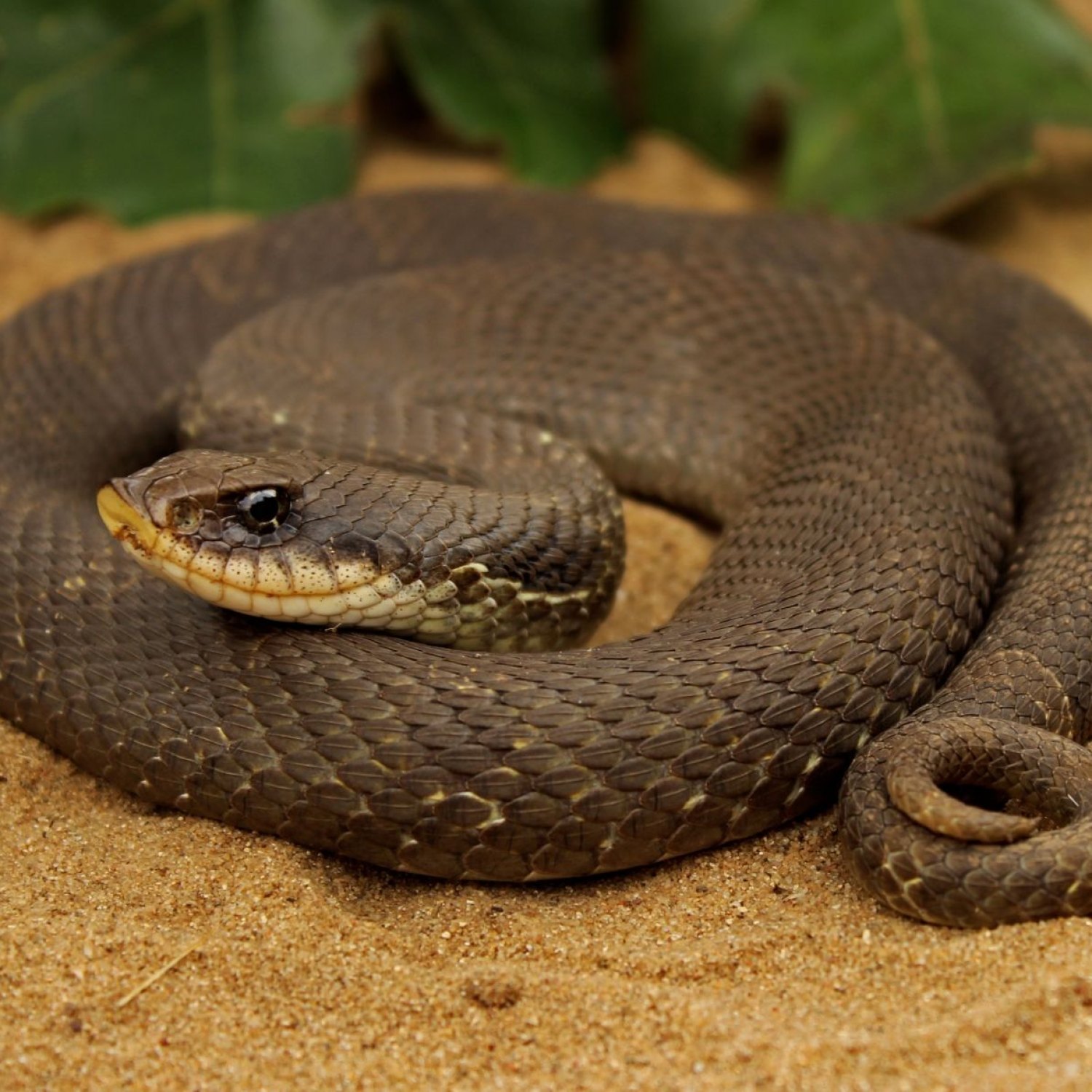
Eastern Hognose Snake
18-46 inches
The Eastern Hognose Snake, found in eastern and central North America, is known for its thick, stocky body and unique upturned snout. With a length ranging from 18 to 46 inches, this non-venomous Colubridae family member is often mistaken for a dangerous species but is harmless to humans. Keep an eye out for its distinct coloring and behavior, as it is an important part of its ecosystem. #EasternHognoseSnake #NorthAmerica #SnakeFacts
Animal Details Summary:
Common Name: Eastern Hognose Snake
Kingdom: Animalia
Habitat: Open woodlands, grasslands, and sandy areas
The Fascinating World of the Eastern Hognose Snake
The animal kingdom is full of diverse and intriguing creatures, each with its unique characteristics and abilities. In this article, we will delve into the world of the Eastern Hognose Snake, an incredible reptile that is sure to captivate your interest.The Eastern Hognose Snake, scientifically known as Heterodon platirhinos, is a species of colubrid snake found in the open woodlands, grasslands, and sandy areas of eastern and central North America. This fascinating snake has a distinct appearance and fascinating behaviors that make it stand out among other species Eastern Hognose Snake.
The Kingdom and Classification of the Eastern Hognose Snake
Like all living creatures, the Eastern Hognose Snake belongs to the Kingdom Animalia, which comprises all the animals in the world. It belongs to the Phylum Chordata, which includes all animals with a spinal cord. The Eastern Hognose Snake's Class is Reptilia, and its Order is Squamata, which encompasses all reptiles and lizards. Lastly, its Family is Colubridae, which is the largest and most diverse family of snakes.Habitat and Geographic Distribution
The Eastern Hognose Snake is native to the United States, specifically in eastern and central North America. They can be found in states such as Minnesota, Wisconsin, Illinois, Texas, Florida, and New York. They prefer to live in open woodlands, grasslands, and sandy areas with loose soil, which makes it easier for them to burrow and hide.Fascinating Features of the Eastern Hognose Snake
One of the most intriguing aspects of the Eastern Hognose Snake is its feeding method. It is carnivorous, meaning it feeds on other animals Eurasian Bullfinch. They have a wide variety of prey, including frogs, toads, salamanders, small mammals, and even other snakes. What sets them apart from other snakes is their unique hunting technique. The Eastern Hognose Snake has an upturned snout, which they use to dig through the soil and sand to find their prey. They also have a specialized saliva that helps them immobilize small animals, making it easier for them to eat their meals.Another fascinating feature of the Eastern Hognose Snake is their body shape. They have a thick, stocky body, which gives them a bulky appearance compared to other snakes. This unique shape helps them burrow through the soil and sand, as well as adapt to their environment. They also have a flattened head and a broad head, giving them a distinctive look.
The Eastern Hognose Snake's Coloration
The Eastern Hognose Snake has a diverse range of colors, varying from yellow, brown, and gray, with dark brown or black markings. The coloration of their body helps them camouflage and blend into their surroundings, making it easier for them to hunt and hide from predators.The Eastern Hognose Snake's Size
The Eastern Hognose Snake is a relatively small snake, with an average length of 18 to 46 inches. However, there have been reports of some reaching up to 60 inches in length. Females are usually longer than males, and because of their small size, they are often mistaken for juvenile snakes.Behavior and Defense Mechanisms
The Eastern Hognose Snake has several unique behaviors and defense mechanisms that make it stand out among other snakes. When threatened, the snake will often flatten its neck and make a loud hissing noise, mimicking a cobra. This behavior, along with their upturned snout, gives the snake a menacing appearance, which is usually enough to ward off predators.However, if the predator does not leave them alone, the Eastern Hognose Snake has another trick up its sleeve. They have the ability to flatten their bodies, hiss loudly, and even play dead! They will roll onto their backs and stay motionless, with their tongue lolling out, making it appear as if they are dead. This behavior has earned them the nickname "puff adder" and is an excellent defense mechanism against predators.
The Importance of the Eastern Hognose Snake in the Environment
The Eastern Hognose Snake plays a vital role in its ecosystem. As an active predator, it helps control the population of smaller animals, such as frogs and toads. This, in turn, prevents overpopulation and maintains a balance in the environment. They also serve as prey for larger animals, such as birds and mammals, contributing to the food chain.Conservation Status and Threats
Although the Eastern Hognose Snake is not currently listed as an endangered species, its population is declining, mainly due to habitat loss and fragmentation. The conversion of natural habitats into agricultural or urban areas has significantly impacted their numbers. Another threat to this species is road mortality, as they are often hit by vehicles while crossing roads.Conclusion
The Eastern Hognose Snake is a fascinating and unique reptile found in North America. From its distinct appearance and hunting technique to its impressive defense mechanisms, this snake has many remarkable features. As we continue to learn more about these incredible creatures, it is vital to protect their natural habitats and ensure their survival in the wild. The world would not be the same without the Eastern Hognose Snake and the significant role it plays in maintaining a balanced ecosystem.

Eastern Hognose Snake
Animal Details Eastern Hognose Snake - Scientific Name: Heterodon platirhinos
- Category: Animals E
- Scientific Name: Heterodon platirhinos
- Common Name: Eastern Hognose Snake
- Kingdom: Animalia
- Phylum: Chordata
- Class: Reptilia
- Order: Squamata
- Family: Colubridae
- Habitat: Open woodlands, grasslands, and sandy areas
- Feeding Method: Carnivorous
- Geographical Distribution: North America
- Country of Origin: United States
- Location: Eastern and central North America
- Animal Coloration: Varies, but typically yellow, brown, or gray with dark brown or black markings
- Body Shape: Thick, stocky body with an upturned snout
- Length: 18-46 inches
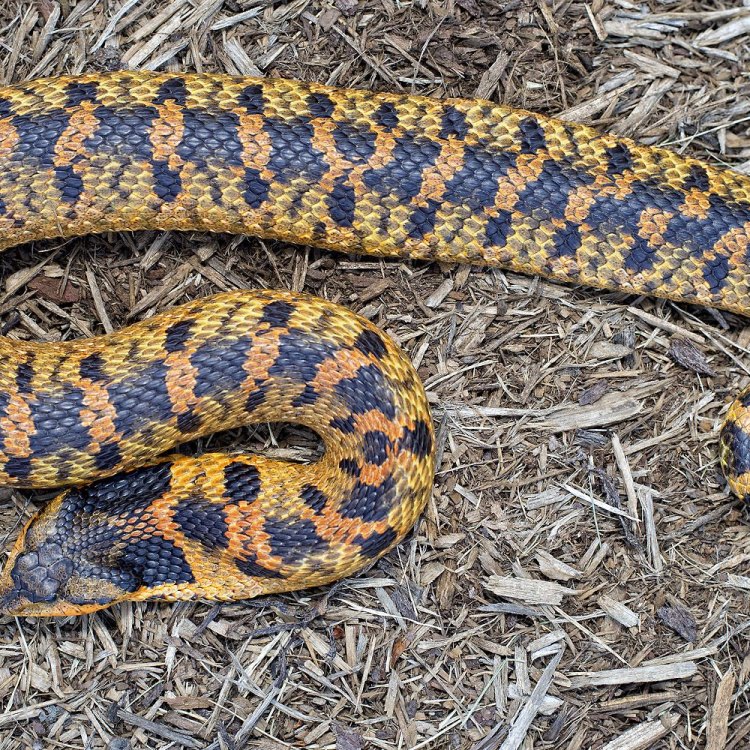
Eastern Hognose Snake
- Adult Size: 3-4 feet
- Average Lifespan: 10-15 years
- Reproduction: Sexual
- Reproductive Behavior: Mating occurs in early spring
- Sound or Call: Hisses and flattens its neck to mimic a cobra
- Migration Pattern: Non-migratory
- Social Groups: Solitary
- Behavior: Burrowing snake that spends a lot of time underground
- Threats: Habitat loss, road mortality, and persecution by humans
- Conservation Status: Least Concern
- Impact on Ecosystem: Controls populations of small mammals and helps maintain balance in ecosystems
- Human Use: Sometimes kept in captivity as pets
- Distinctive Features: Distinct upturned snout, neck flattening behavior
- Interesting Facts: Eastern Hognose Snakes are known for their dramatic defense behavior, where they hiss, flatten their necks, and may even play dead to deter predators
- Predator: Birds of prey, larger snakes, and mammals
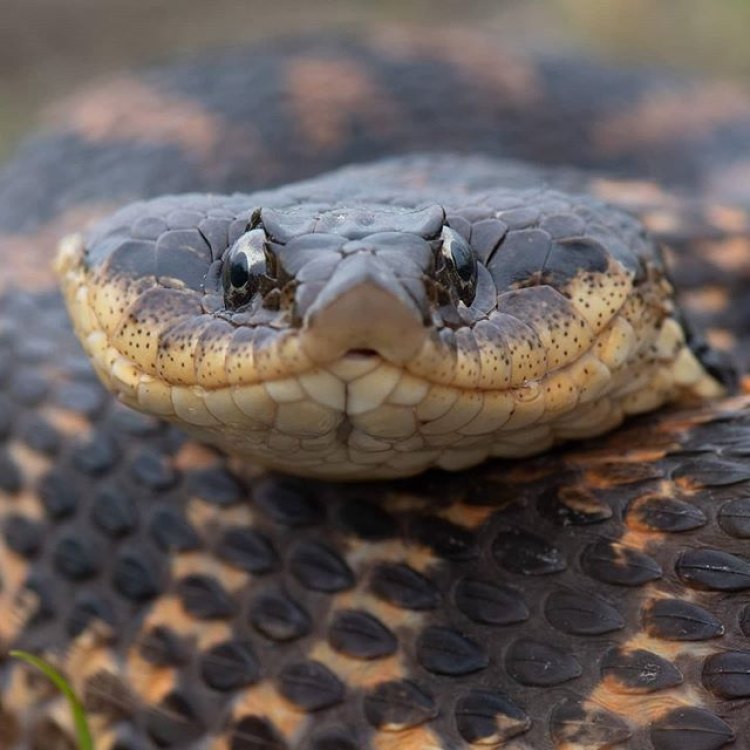
Heterodon platirhinos
Exploring the Fascinating World of the Eastern Hognose Snake: A Master of Defense and Balance in Ecosystems
The natural world is full of diverse and fascinating creatures, each with their own unique features and characteristics. Among these creatures is the Eastern Hognose Snake, a small but mighty snake found across North America. Known for its distinctive upturned snout and dramatic defense behavior, the Eastern Hognose Snake has captured the attention of researchers and nature enthusiasts alike. In this article, we will explore the world of the Eastern Hognose Snake, from its physical traits to its impact on ecosystems and even its role in human use PeaceOfAnimals.Com.Physical Characteristics and Behavior
The Eastern Hognose Snake, also known as Heterodon platirhinos, is a relatively small snake with a thick body and a broad, flattened head. This species of snake typically grows to be 3-4 feet in length, making it one of the larger snake species in North America. While it may not be the longest snake, it certainly makes up for it with its unique features.
One of the most distinctive features of the Eastern Hognose Snake is its upturned snout, which gives it a pig-like appearance. This specialized snout is used for digging and burrowing, making it well adapted to its preferred habitat of loose, sandy soils. As a burrowing snake, the Eastern Hognose spends a lot of its time underground, where it is protected from predators and extreme weather conditions. In fact, it is often difficult to spot these snakes in the wild, as they are quite secretive and elusive.
But when the Eastern Hognose Snake does emerge from its underground burrow, it puts on quite a show. Hognose snakes are known for their dramatic defense behavior, where they will hiss, flatten their necks, and even play dead when feeling threatened Eland. This behavior has earned them the nickname "puff adders." This defense strategy is also why they are known as hognose snakes, as their snouts can be flattened and turned up like a hog's nose.
Reproduction and Lifecycle
Eastern Hognose Snakes reach sexual maturity at around 3-4 years of age and have a lifespan of 10-15 years, with some individuals living as long as 20 years. Mating usually occurs in the early spring, just after the snakes emerge from hibernation. During this time, males will compete for females by engaging in combat dances, where they push and shove each other.
Once a female has been successfully courted, she will lay a clutch of 25-50 eggs, typically in a decaying log or other sheltered location. After incubating for 6-8 weeks, the eggs will hatch, and the juvenile snakes will emerge. These young snakes are fully independent and must fend for themselves from birth. They will reach reproductive maturity at 2-3 years of age, continuing the cycle of life.
Impact on Ecosystems
The Eastern Hognose Snake plays a vital role in the ecosystem, as it controls populations of small mammals such as rodents, frogs, and toads. By keeping these populations in check, they prevent overgrazing and maintain a balance in the ecosystem. In addition, their burrowing behavior also helps to aerate and mix soils, making them beneficial to plant growth.
Human Interaction and Conservation
While the Eastern Hognose Snake is not considered an endangered species, it does face threats in the wild. Habitat loss and fragmentation are major issues for this species, as more and more land is developed for human use. In addition, road mortality and persecution by humans, who often mistake them for venomous snakes, are also significant threats to their survival.
But it's not all bad news for the Eastern Hognose Snake. Some individuals are kept in captivity as pets, although they can be challenging to care for due to their specialized diet and burrowing behavior. Additionally, the Eastern Hognose Snake is also protected in some states, and efforts are being made to conserve and protect their natural habitat.
Interesting Facts
Other than its unique physical features and defense behavior, the Eastern Hognose Snake has many interesting and lesser-known facts. For example, while it may seem like a relatively harmless snake, it is actually mildly venomous. However, its venom is only potent enough to subdue its small prey and is not a threat to humans.
Another interesting fact is that the Eastern Hognose Snake is non-migratory, meaning it does not travel long distances for food or breeding purposes. This makes it particularly vulnerable to habitat loss, as it is not able to adapt to changes in its environment easily.
Predators and Threats
While the Eastern Hognose Snake may have its share of predators, such as birds of prey, larger snakes, and mammals, it has developed unique defense strategies to ward them off. In addition to its dramatic hissing and neck flattening, the snake may also roll onto its back and open its mouth, playing dead to deter predators. However, these strategies do not always work, and these snakes still face threats to their survival in the wild.
In conclusion, the Eastern Hognose Snake may not be the most well-known or majestic species, but it certainly is a fascinating one. With its distinctive physical features, unique defense behavior, and crucial role in maintaining balance in ecosystems, it is a species worthy of our attention and conservation efforts. Next time you come across an Eastern Hognose Snake, take a moment to appreciate its beauty and importance in the natural world.
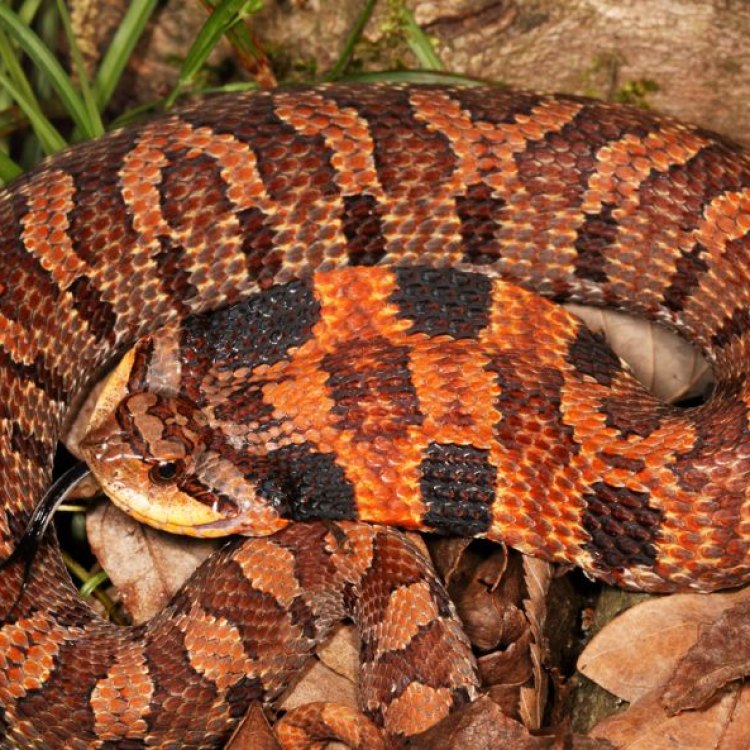
The Fascinating World of the Eastern Hognose Snake
Disclaimer: The content provided is for informational purposes only. We cannot guarantee the accuracy of the information on this page 100%. All information provided here may change without prior notice.

